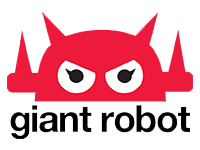International comics spotlight on Brecht Evens from Belgium
Seiichi Hayashi from Japan, Charles Glaubitz from Mexico, Jason from Norway–every time I attend Comic-Con I encounter at least one international artist with jaw-dropping, original talent who seems to redefine what comics can be. This year it was Brecht Evens from Belgium. His translated, painterly graphic novels, The Wrong Place (2010) and The Making Of (2012) are gorgeous slices of life that convey the power, drama, and luminosity of life without tights or capes. Or outlines or word balloons, for that matter.
Brecht’s storytelling ranges from stream-of-consciousness to dreamy and his panels swing from hyper detailed to quite sparing. But his gorgeous, voyeuristic pages always have a natural pace, truthful tone, and resonating message about the art of being human.
After meeting Brecht at the Drawn & Quarterly table, attending his panel with no visuals but plenty of interest, and then having dinner with the same crew as him at Comic-Con, I followed up with some questions about his work via email.
MW: It was a pleasure to meet you in San Diego, and I hope you enjoyed your visit. What were some observations that you took away from your first Comic-Con ?
BE: Thank you, and thanks for showing my comic book to the actress who played the scientist who tells the President the world is going to end, in The Day After Tomorrow!
There were a lot of nice people to meet at Comic-Con, but as a place, including the area around the convention center, it felt like walking around in a shopping mall for a week. Very peculiar.
MW: To those of us who’ve come across your work solely through the Drawn & Quarterly releases, it seems like you’ve arrived with your style fully realized. Can you tell us a little about how your work has evolved since you were an art student?
BE: I’ve mucked about a lot before making a big change in approach with The Wrong Place. My drawings were much more cartoon-comic-like, less varied in form and texture. It’s at art school that I was pushed to do this, and I’m very grateful for it. Art school for me was the opposite experience of Clowes’ Art School Confidential, which I remember as a complaint about arty-farty bullshit. It made my comics much better.
MW: Do you have traditional models when it comes to comics or are you applying non-comic book styles to your story telling?
BE: Within comics there’s a lot of of good models. I have very innovative comic storytellers like Olivier Schrauwen or Chris Ware in the back of my mind, as well as quick, expressive ones like Jules Feiffer.
MW: The luminosity of your work reminds me of how film glows off a screen at the movies. Are you influenced by cinema at all? Any filmmakers? Do you hear a soundtrack when you envision your story?
BE: Not particularly. There must be cinematic influence, but I see it as something to be careful with–and not make comics like you would a movie storyboard, like cinema on paper.
MW: There’s no way your work can be as spontaneous as it feels when I read it. What are some of the steps that go into a page?
BE: The drawing is pretty direct. I apply the colors without a pencil sketch below, so I have to stay alert and draw slowly. It’s probably drawn more slowly than it seems, with a lot of pauses for staring at the drawing and planning the next few brushstrokes.
MW: Your watercolors are loaded with power but sometimes when I’m reading your works, I feel like I’ve taken off my contacts. Can you describe the trade-off between detail and energy?
BE: A trade-off, that’s how it feels. Every detail added is weighed for its importance, because you pay a little price in spontaneity and movement. And as you say, because I rarely use outlines, sometimes the image can be too “flou,” a bit too soft.
MW: You mentioned that you prefer to tell stories about topics that you are familiar with. How are partying and making art (the subjects of The Wrong Place and The Making Of) complementary? Detrimental to each other?
BE: Balancing the two is a challenge. I think the scale mostly tips toward play and not enough toward work.
Find out more about the Brussels-based artist at his blog or the Drawn & Quarterly site.








